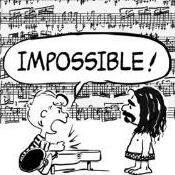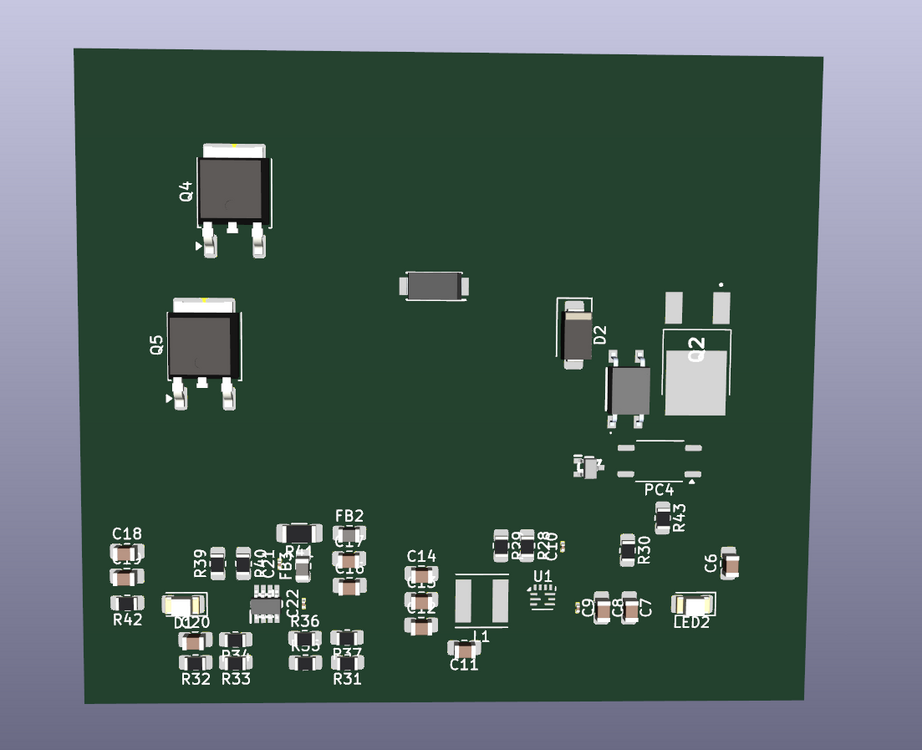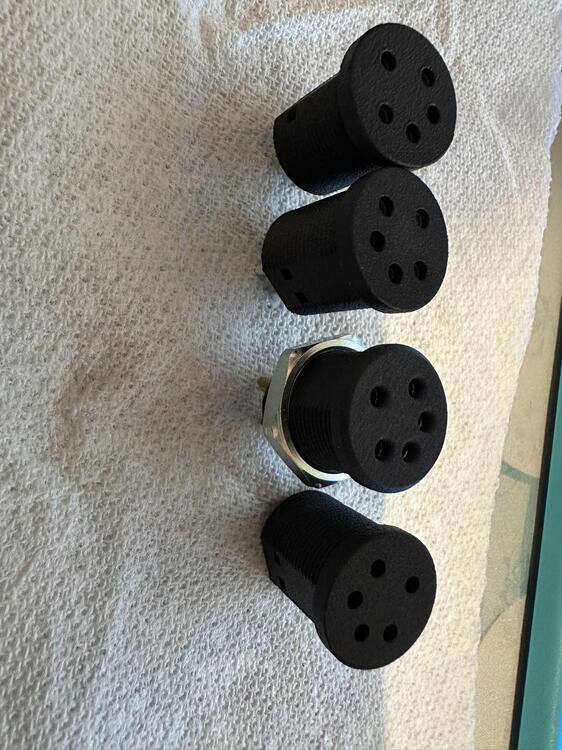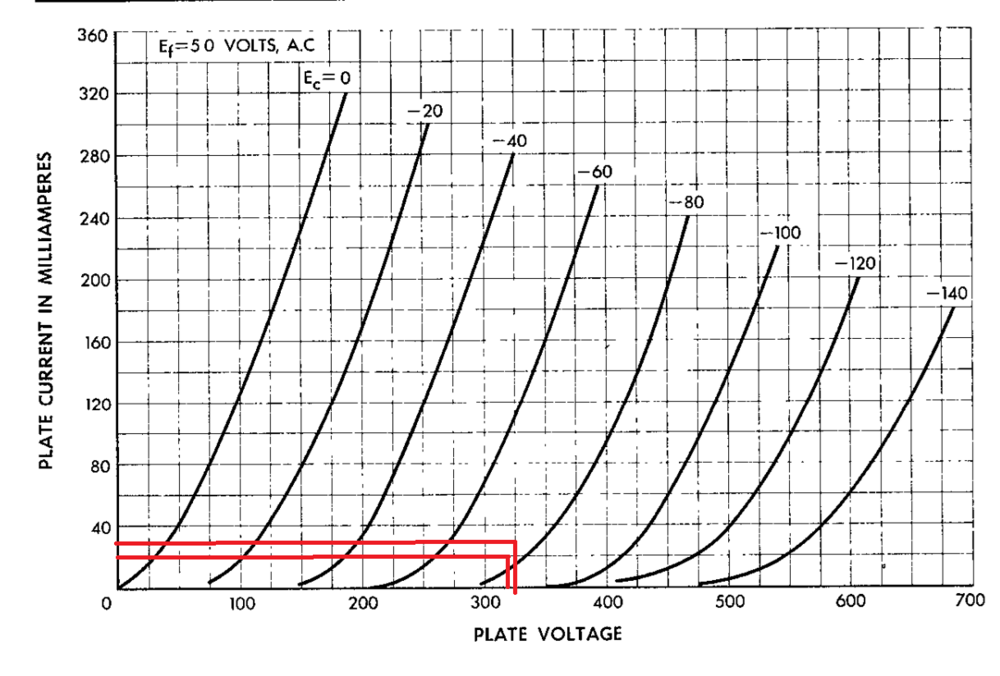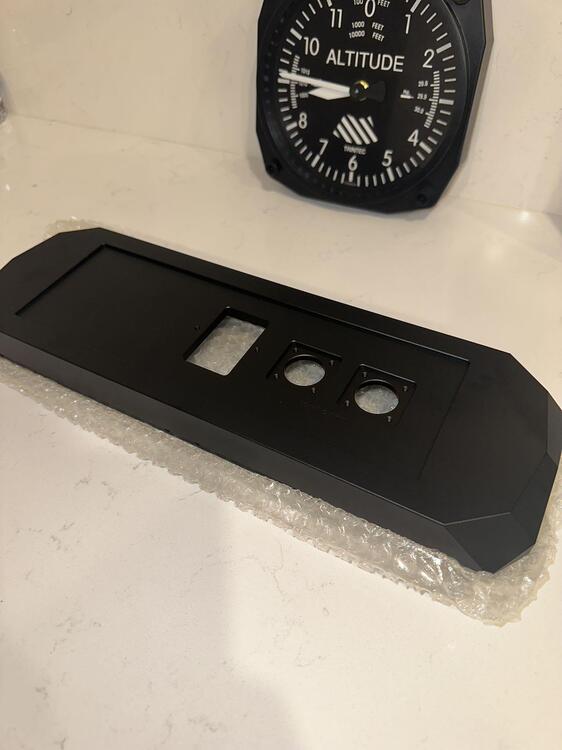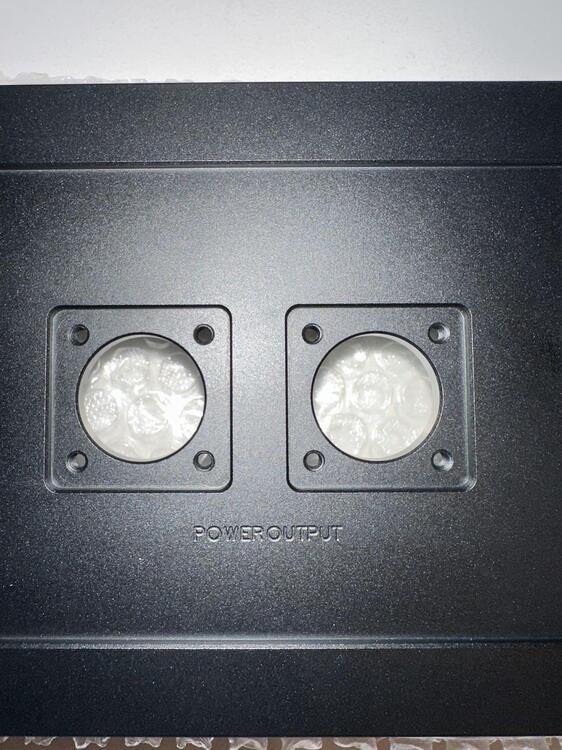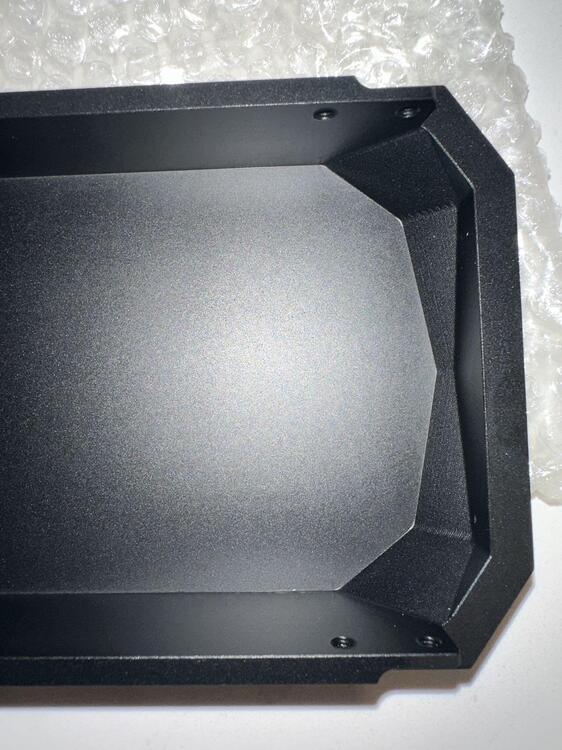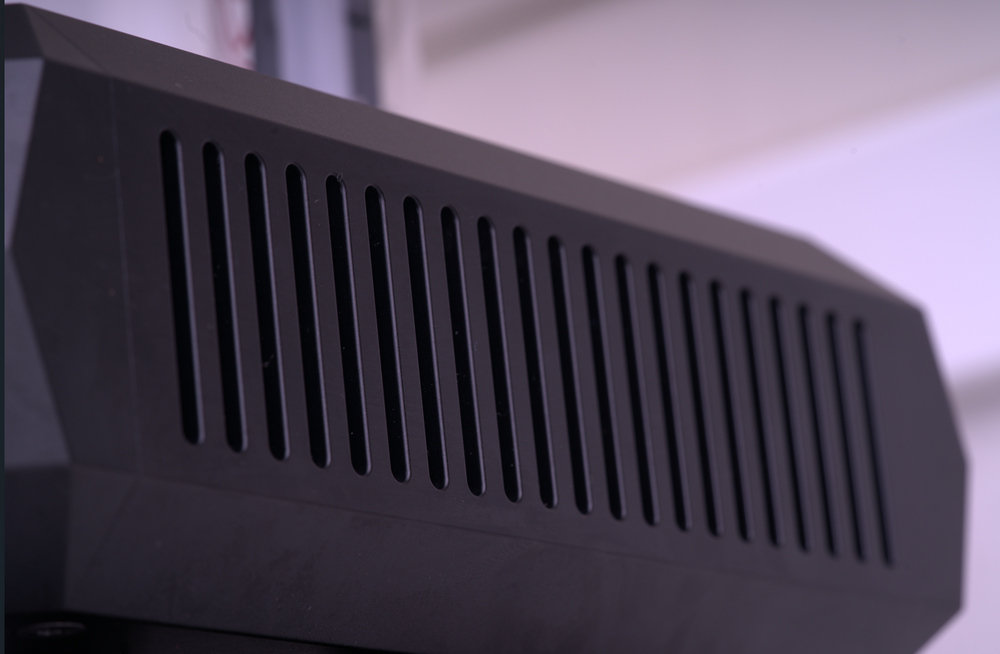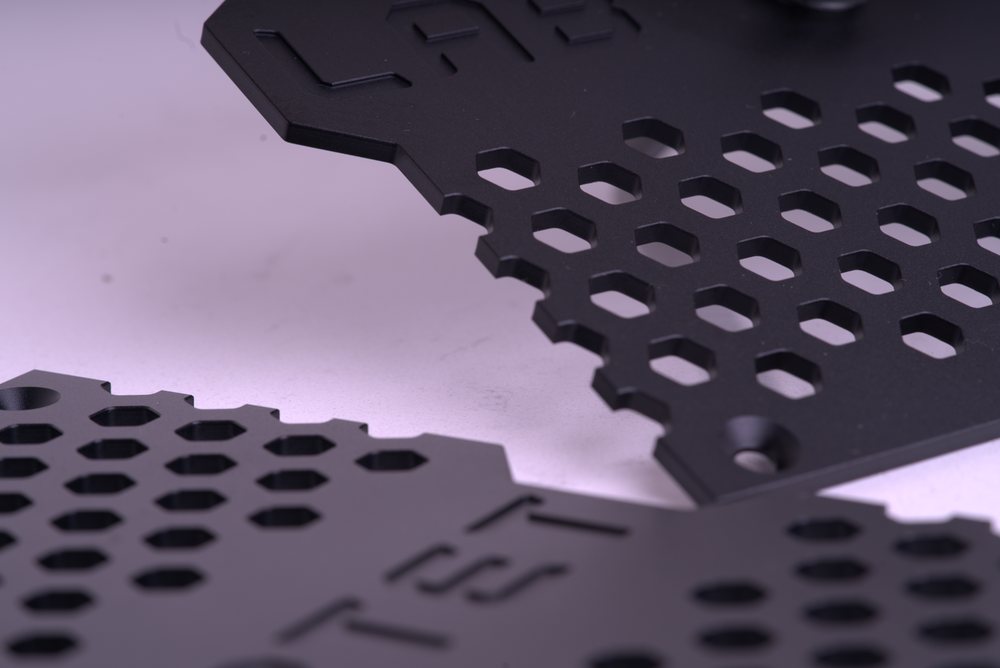-
Posts
80 -
Joined
-
Last visited
Profile Information
-
Location
Socal, USA
Recent Profile Visitors
1,151 profile views
Shawn's Achievements

Limited Edition Bronze Participant (4/6)
63
Reputation
-
Eagle eye! Good catch. I’ve updated the image and added the missing R41–FB2–C16–C17 connections as you indicated. Thanks!
-
I checked your schematic and compared it with your previous hardware photos, then corrected a few small errors(From both sides of us). Here’s the updated layout. It’s basically reverse-engineered from the pictures you posted earlier. I also derived the schematic from it, but it’s quite messy at the moment. If anyone’s interested, I can post that version as well.
-
Thanks to @JoaMat for posting the 2A3/300B auto-switching filament supply. Although the picture isn’t very clear, I’ve been trying to figure out how it actually works. I roughly recreated the layout (still very preliminary, no routing yet. So please note it may/does contain errors. From what I can tell, the circuit likely uses the voltage comparator on the left to sense the voltage drop across a 0.05 Ω current-sense resistor, distinguishing the different filament currents of 2A3 vs. 300B. The two optocouplers at the upper right appear to be controlled by that comparator and might handle auto-bias adjustment. This is still an early interpretation. I’ll keep updating as I make progress or manage to get a cleaner schematic. That looks really interesting. Can I ask a quick question: Are the two trimmers on top each setting the grid voltage vs. plate current, or are they controlling the grid potential of each EL34 individually? Also, is the 120 V GRHV section meant to supply the bias/grid voltage reference for the output tubes?
-
The pin hole diameter is roughly 2–4 mm, but one thing to keep in mind is that 3D printers, especially hobby-grade ones tend to have pretty poor dimensional accuracy. A nominal 2 mm hole can easily shrink to around 1.2–1.4 mm, so you’ll need to experiment a bit to dial in the correct size for your printer and filament. Yes, I’m using the threaded collet-style socket. It’s simple and works fine, but honestly, I think the mounting method Joamat posted above is better since you don’t have to fuss with rotating and aligning the jack during installation. The HA-3FXX is a good choice. The only downside is that it doesn’t have a gold-plated version. Hopefully, someone can find a gold-plated alternative. I’ll stick with my current version for now until I get the chance to make a screw-fixed version. And if enough people are interested in the current version, a group buy could definitely be possible.
-
I did some test prints of Stax jacks with different pin-hole diameters. As you can see, they are obviously 3D-printed, but the material is rated to withstand up to 195 °C. So far I’ve been using them for about 2 years without any issues.
-
Alright, here are the quick results. Case 1: Rupper = 1500, Rlower = 3200, G-pot = 10 kΩ (set at ~10%). Va ≈ –1.7 V, Vgk ≈ –85.6 V, Plate Voltage = 362.2 V. Case 2: Rupper = 1200, Rlower = 2600, G-pot = 10 kΩ (set at ~10%). Va ≈ 3.3 V, Vgk ≈ –85.3 V, Plate Voltage = 367.4 V. I didn’t measure at 38 mA, since I wasn’t sure whether the EL34 would be overloaded, and I also don’t have the right resistor configuration at hand (Vishay Dale parts are really not cheap). That said, you can see that in both cases the plate voltage stays in the 400 V max cell, which in theory should not be dangerous, but who really knows.
-
After some rounds of trial and simulation, I thought I’d put together a rough guide for setting the 300B operating point, mainly to make life easier when dialing things in. Given static operating currents: 34.3 mA → Rk = 2160 Ω, Vgk = –73.7 V, Grid pot = 10 kΩ, set around 10%. 23.8 mA → Rk = 3200 Ω, Vgk = –75.8 V, Grid pot = 10 kΩ, set around 10%. Plate voltage check (with Va = 0 V target): At 34.3 mA → Plate Voltage = Va – Vk = 0 – (–325.9) = 325.9 V. At 23.8 mA → Plate Voltage = 323.8 V. By matching these points against the 300B characteristic curves (see the red-line markers in the attached graph), the theoretical Vgk comes out roughly between –70 V and –75 V, which lines up with the measured –73.7 V and –75.8 V. From the curves, the 34.3 mA point looks more linear. Pushing current further could be even better, but that depends on whether the EL34 can handle it safely and whether the PSU has enough overhead. All of these measurements are under a ±400 V supply. The 300B datasheet gives a max plate voltage of 400 V (though some manufacturers claim 450 V). On the XL build, with 400 V rails, the plate voltage is about 335 V, and still within a safe zone. I haven’t confirmed the behavior at 450 V rails, but I’d expect plate voltage around ~380 V, which starts to get a bit risky. If anyone’s interested, I can run tests at 450 V and report back the voltages at each node.
-
Thanks for the report. May I ask if you are using a GRHV supply? And is your transformer secondary around 330 VAC for the ±400 V rails? I just want to rule out whether my drop is caused by insufficient transformer headroom rather than the current limit itself.
-
Thanks a lot for the hint. Since I haven’t ordered the test resistors yet, I’ll probably need some time before I can try it out on a new build. But for today I did some measurements on the current operating point, and hopefully these numbers help add to the pool of data. For easy comparison, I’ll use your same format. Based on the WE datasheet, I think both of our Vgk values are on the shallow side, but as Kevin has mentioned, modern 300Bs vary a lot, so I’m not 100% sure if this is correct. It might make sense to raise the current to 33–34 mA, in which case the required Vgk would move down (according to the WE300B datasheet, Vgk at 34 mA / 400 V is about –90 V). My expectation is that as the current goes up, the offset also increases and Vgk becomes more negative. To bring the offset back to 0 V, you’d adjust Vg, but when Vg changes, Vgk may swing more positive again. If possible, it would be great if you could validate this in LTspice. One more observation: with ±400 V supply, under load I measured about 389 V. I’m not sure if this is simply normal drop or if my current-limit is engaging. Could you let me know if your ±400 V rails drop as well? If yours stay right at 400 V, then I probably need to tweak my current-limit detection resistors.
-
Thanks for your reply. I plan to test different combinations of static current and cathode resistor values to better understand how they interact. If I get some results I’ll come back and share them. For now, I’m planning to try around 27–30 mA of static current. It’s a bit difficult to find high-precision resistors around 1.2 kΩ, so on the cathode side I’ll probably increase to about 8 kΩ and see how it behaves.
-
About the pin choice. I think this one might be closer to the original tube pins: MPN:6835-0-00-15-00-00-44-0 https://www.mouser.com/datasheet/2/273/MMMC_S_A0004813843_1-2556643.pdf I haven’t ordered it yet to confirm, but maybe it helps you. Also, I’d like to get your advice: At 400 V / 22 mA, would you consider setting Vgk around –95 V a good operating point? I’m also thinking about increasing the static current to around 27–30 mA. From what I see, the EL34 max plate dissipation is ~25 W. At 400 V / 30 mA, that’s only about 12 W, so it looks safe on paper. I’d love to hear your thoughts on this.
-
Yes, I noticed that too. But I found those machining marks only on the inner rear panel, left and right sides. The rest of the chassis looks clean. I’m pretty sure they just used 3-axis machining, which is still miles better than what I could do on my home-garage CNC. Of course, 5-axis is another story, and I’ve been thinking about designing some more complex curved surfaces where 5-axis paths would actually make sense. Overall though, I’m quite happy with how this chassis turned out. I haven’t yet checked all the PCB mounting hole positions against the boards, but so far it looks promising.
-
I’m up here at 12,000 feet, eating a bagel while tweaking my amp. Altimeter says it’s all good.🤞 And you know what, if you’re interested, I actually have an upcoming spare CNC chassis set (one PSU case and one amp case). I’d be more than happy to send it your way just for fun, freely. Let me know your thoughts.
-
In the past few months, I haven’t been idle. Besides finishing a T2 Mini, I also continued to refine the GG chassis design. Through these experiences learning 3D design, I decided to completely re-draw the CAD files and hand them to a professional factory for prototyping (yes, I don’t believe a hobbyist garage CNC can really handle this job☹️). Below are some photos of the sample unit. This time the chassis is fully CNC-machined, which is why you can see the extremely thick panels and the more complex geometric structures compared to earlier versions. The side heatsinks are not separate parts. They are directly CNC machined into the chassis walls. At the same time, the bottom cover is split into two independent left and right plates, each with a grid-style cutout design. You can remove only one side of the bottom cover to do testing or adjustments without disturbing the entire chassis. The grid pattern reduces weight while maintaining mechanical strength, and it also improves ventilation inside the chassis. More updates will follow soon.
-
I actually kept the trimmers on the back side of the board. The PCB is mounted upside down near the top of the chassis, and I didn’t drill dedicated holes in the top cover for adjusting the trimmers. So each time I need to fine-tune them, I just tilt the whole chassis on its side and yes a bit inconvenient, but still manageable. A better solution would definitely be to make access holes in the top panel.



